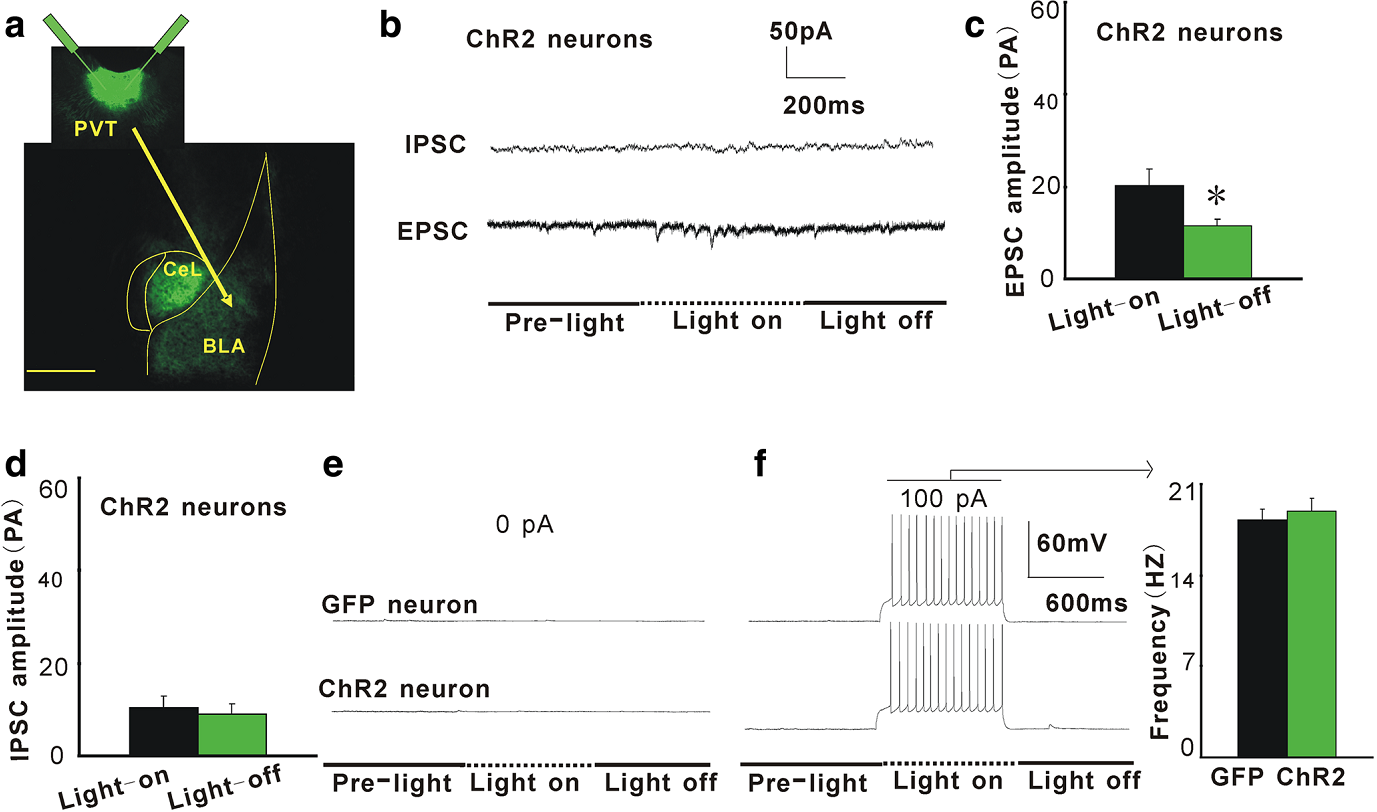AAV-ChR2 was used to examine if PVT projects to and regulates the excitability of other amygdala nuclei, AAV-EGFP was used for control. (From
BrainVTA)
The viruses used in this article from BrainVTA are in the table below
|
Optogenetic |
rAAV-hSyn-hChR2-EGFP-WPRE-pA |
|
Control |
rAAV-hSyn-EGFP-WPRE-pA |
Ming Chen, Lin-Lin Bi
Pub Date: 2018-11-07,
DOI: 10.1007/s12035-018-1407-z,
Email: sales@brainvta.com
The dysregulation of fear learning and abnormal activities of cerebral networks may contribute to the etiologies of anxiety disorders. Although it has been proposed that decreased activity in the paraventricular nucleus of the thalamus (PVT) to the lateral central nucleus of amygdala (CeL) pathway could induce an attenuation of learned fear, no study has shown the effect of the direct optogenetic activation of PVT projecting CeL neurons in vivo on unconditioned fear-related behaviors or learned fear expression. The mechanisms that control the neuronal activity of the PVT-CeL pathway involved in anxiety are rare. Here, we found that CeL neurons have varied responses to optogenetic excitation of PVT terminals in the CeL: neurons with relative high Excitability (~ 30%), neurons with relative low excitability (~ 60%), and neurons with no excitability (~ 10%). We next explored the role of the PVT-CeL pathway in unconditioned and conditioned fear-related behaviors by using optogenetics and anxiety assays in freely moving mice. We observed that temporally precise optogenetic activation of the CeL-projecting PVT neurons had no effect on unconditioned fear-related behaviors on the elevated plus maze test and the open field test. But optogenetic activation of the CeL-projecting PVT neurons increased conditioned fear expression. We then found that optogenetic long-term depression (LTD) induction in the CeL receiving PVT afferents effectively exerted a persistent attenuation of learned fear. The percentage of neurons with relative high excitability was decreased by the LTD induction, and the percentage of neurons with relative low excitability was increased by the LTD induction. Taking these results together, we identify that increased activity of the PVT-CeL pathway could lead to as excessive learned fear. The CeL neurons with relative high responses to the photo-stimulation of PVT afferents in the CeL may be the key neurons that regulate the output of learned fear expression. Our optogenetic LTD protocol may inspire the development of novel treatments for anxiety disorders involving deep brain stimulation to induce plasticity at relevant brain areas.

Figure. 1 Projection-specific excitation of PVT terminals in the BLA does not change the firing of BLA neurons.
To explore the mechanisms that control the neuronal activity of the PVT-CeL pathway involved in anxiety, the authors apply direct optogenetic activation methods to study. The results identify that increased activity of the PVT-CeL pathway could lead to as excessive learned fear. The CeL neurons with relative high responses to the photo-stimulation of PVT afferents in the CeL may be the key neurons that regulate the output of learned fear expression. The optogenetic LTD protocol may inspire the development of novel treatments for anxiety disorders involving deep brain stimulation to induce plasticity at relevant brain areas.
BrainVTA offers viral vector construction & virus packaging services for AAV, LV, RABV, PRV, HSV and VSV that help researchers explore questions about genes, neurons, circuitry structure, function of brain network, mechanism and treatment of diseases.
If you have any needs, just email us at
sales@brainvta.com.
